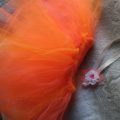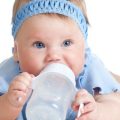Science can be very interesting and fun ifthis is not just a formula in the textbook. Do you know what the schoolchildren lack in chemistry and physics lessons? Practice. Not all teachers entice students with experiences and not all tell how all these complex laws and formulas are related to life. But if you see how these laws work, they cease to be so complex. If your child still does not understand, why teach physics and who needs chemistry, do our experiments together. Let everything boil over you, hiss, disappears and flies away!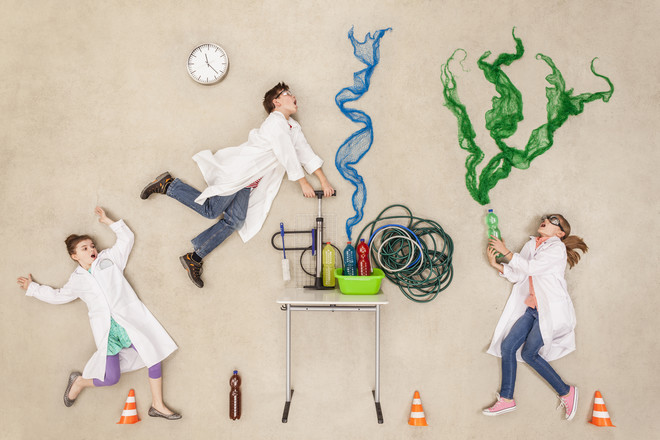 Photo: GettyImages
Photo: GettyImages
Effervescent Rocket
What you will need:effervescent tablets, a plastic box with a tight lid, water. Let's do an experiment: fill the box halfway with water. Throw a tablet in there and quickly close the lid. Put the box with the lid on the table. Wait. BOOM!!! The lid opens, the jar flies away. Scientific explanation: when water and an effervescent tablet combine, a reaction occurs between sodium bicarbonate and citric acid. Carbon dioxide is produced - bubbles. There are so many of them that excess pressure occurs in the box, which tears off the lid and launches a "rocket". The gas, escaping from the hole, pushes the box in the opposite direction.
Ice water
What you need: plastic (not glass!) a bottle of soda water and a freezer. Let's do an experiment: put the bottle in the freezer. 500 ml - for about 2 hours. Take the bottle out of the freezer. Open it and watch how the soda starts to freeze right in your hands. Scientific explanation: soda water freezes at -8, that is, at a lower temperature than regular water. This is because soda contains carbon dioxide and a little salt. The moment you open the bottle, the gas comes out of the water, and the freezing point rises sharply. That's why ice forms on the bottle right before your eyes.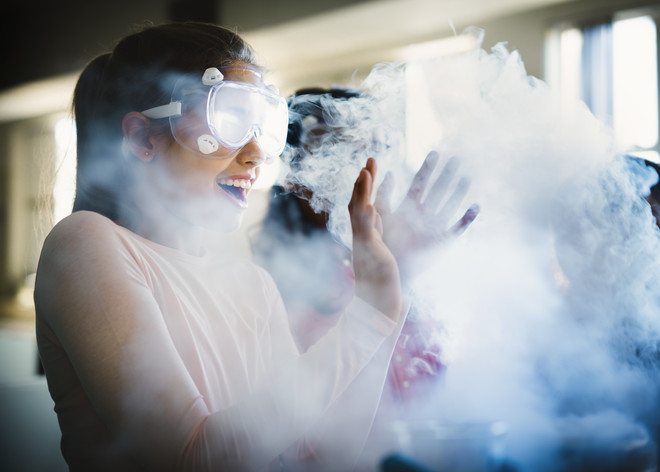 Photo: GettyImages
Photo: GettyImages
Light curve
What you will need:An empty plastic bottle, a needle, a flashlight, a sink. Let's do an experiment: fill the bottle with water and close the lid. Make a hole in the side of the bottle with a needle. Place the bottle on the sink so that the liquid slowly flows down through the hole into the sink. Turn off the light, take a flashlight and shine it through the bottle, directing the beam towards the hole you made. The light will refract and follow the water to the bottom of the sink. Scientific explanation: light travels along the shortest path, that is, in a straight line. In this trick, it passes through the water, is reflected at the boundary of the liquid and air and comes back. The effect of "curvature" of the light beam is created.
Hot paint
What you will need:Two identical glasses or jars, very thick cardboard or plastic to cover the opening of the jar, two different food colorings, cold and hot water. Let's conduct an experiment: pour cold water into one glass, hot water into the other, but not boiling. Add a couple of drops of different food colorings, for example, red into hot water, blue into cold water. Put the "lid" (cardboard or plastic) on the glass of hot water. Holding the lid tightly, carefully turn it over and place the hot glass on the glass of cold water. Carefully pull out the lid. Do you know what will happen? Nothing. The liquids will not mix. Now repeat the same actions, only this time put a glass of cold water on top. And do you know what? The liquids will mix! Scientific explanation: a liquid with a lower density rises above a liquid with a higher density. This is because hot water has a lower density than cold water. After all, at high temperatures, the molecules in water move faster, creating more space between themselves.
Fire extinguisher in jug
What you will need:several candles, matches, 1 teaspoon of soda, 150 ml of vinegar, a large jug. Let's conduct an experiment: place several candles in holders next to each other; they need to stand firmly. Pour vinegar into the jug and add soda. Wait until the hissing stops. Light the candles. Now tilt the jug slightly over each candle, but so that the liquid does not spill out. The candles will begin to go out. Scientific explanation: the soda in the jug interacts with the acid (vinegar), and carbon dioxide is produced. It begins to disperse the oxygen around the candles, which is necessary for combustion. Carbon dioxide is heavier than air, so by tilting the jug, we can extinguish the candles. This is how carbon dioxide fire extinguishers work. Only such (without water) can you extinguish a fire where there is electrical equipment.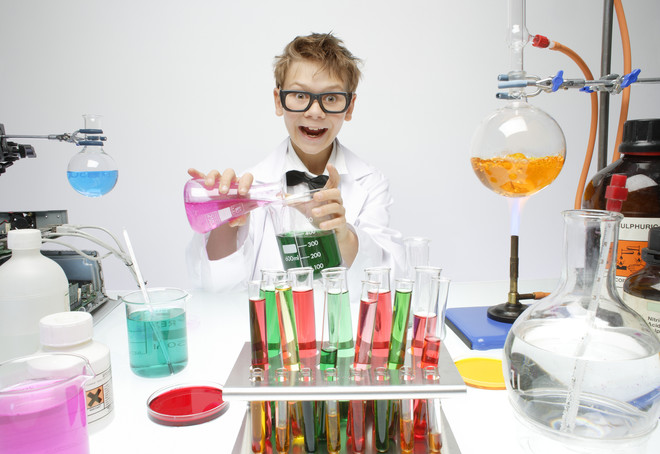 Photo: GettyImages
Photo: GettyImages
Egg in a bottle
What you will need:A glass milk bottle, a hard-boiled egg, a strip of paper, matches. Let's do an experiment: peel an egg, light the paper and throw it into the bottle. Put the egg on top of the neck. When the paper burns out, wait a couple of minutes. The egg will fall inside. Scientific explanation: at the beginning of the experiment, the atmospheric pressure in the bottle is the same as outside. When the paper catches fire, the air in the bottle heats up, its pressure increases, and it gradually leaks between the egg and the neck of the bottle. When the fire goes out, the air cools. But the egg, closing the neck, does not allow the air from the outside to get inside the bottle and equalize the pressure. Finally, the pressure outside becomes so much stronger than inside that the egg is drawn into the bottle.
Multicolored Milk
What you will need:Food coloring, full-fat milk, dishwashing liquid, bowl. Let's do an experiment: pour milk into a bowl to the thickness of a finger. Put 4 drops of each liquid food coloring evenly over the entire surface of the milk. Add a few drops of dishwashing liquid right in the center. The colors will start to mix on their own. Scientific explanation: detergents allow fat to mix with water. With the help of dishwashing liquid, we mixed water and fat in milk, and as a result, swirls and swirls were formed, which is why the colors mixed. You can find even more experiments, simple explanations and interesting stories in the series of books "It's cool!": "Science is cool!", "Physics is cool!", "Nature is cool!", "Space is cool!", "Programming is cool!", "Art is cool!". Read more:





